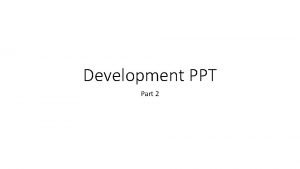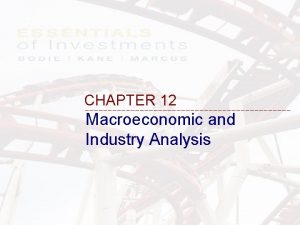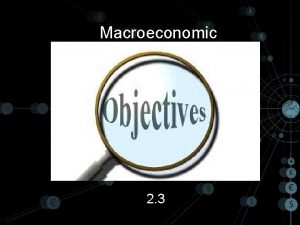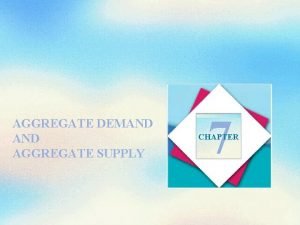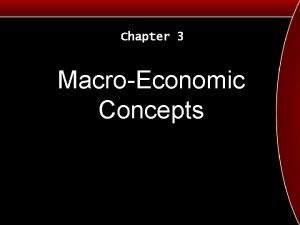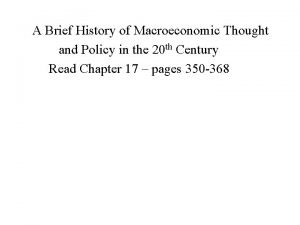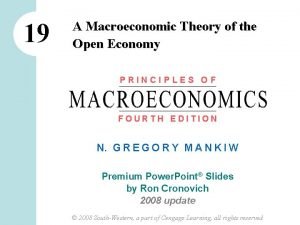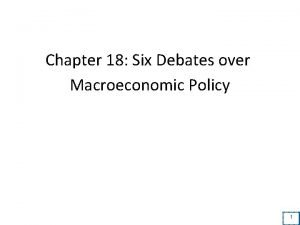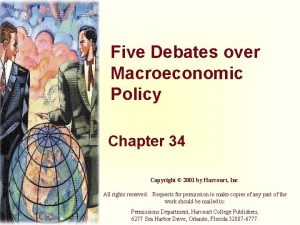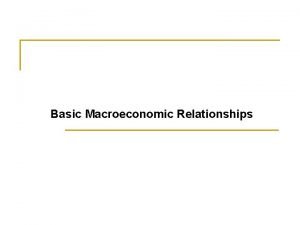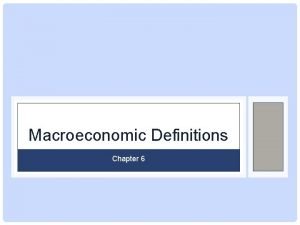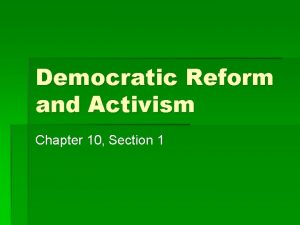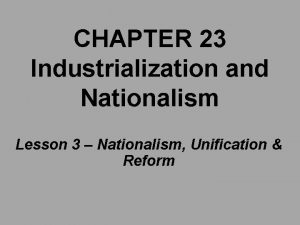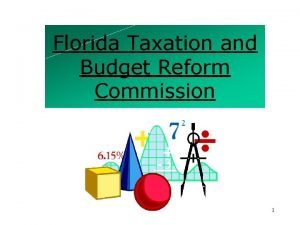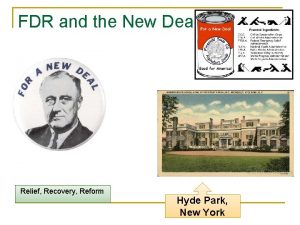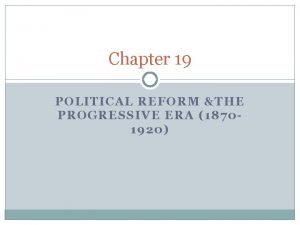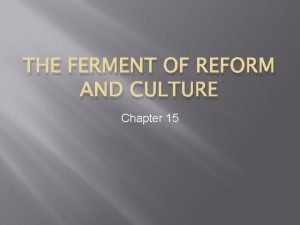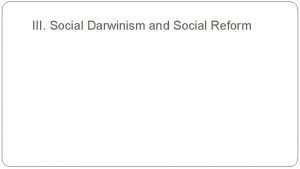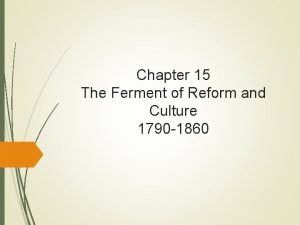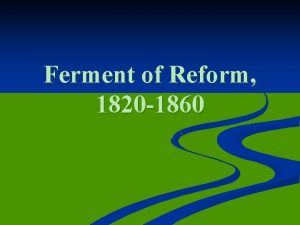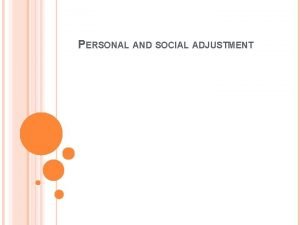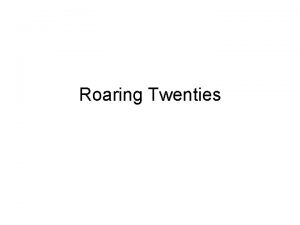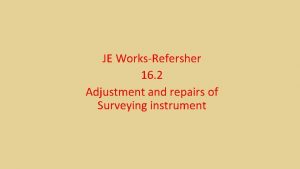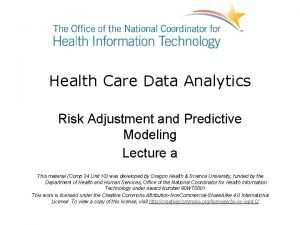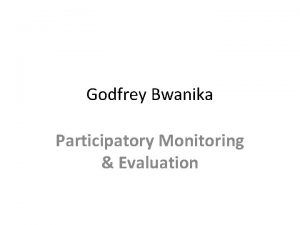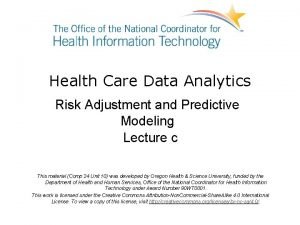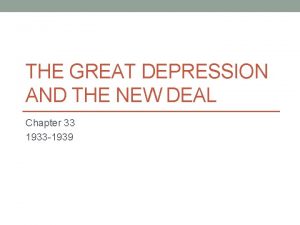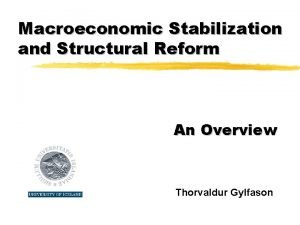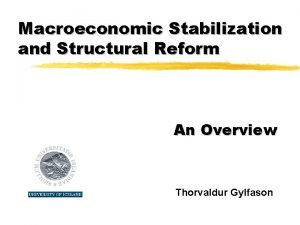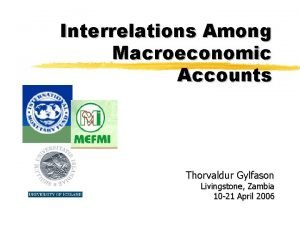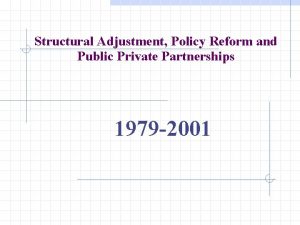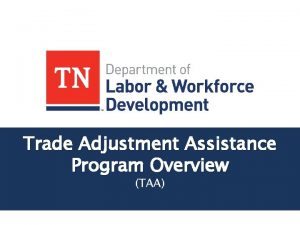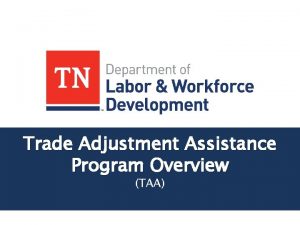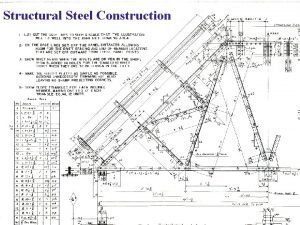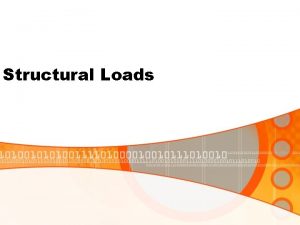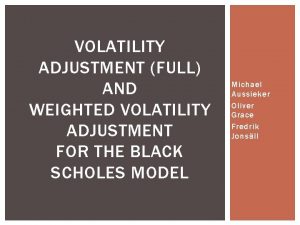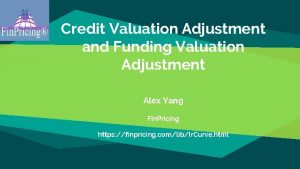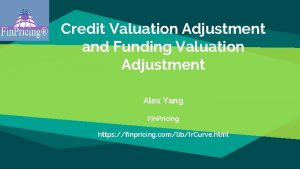Macroeconomic Adjustment and Structural Reform An Overview Thorvaldur











































- Slides: 43

Macroeconomic Adjustment and Structural Reform An Overview Thorvaldur Gylfason

Outline ü Microeconomics of supply and demand Micro q. Examples from agriculture and computers ü Macroeconomics of aggregate supply and Macro demand ü Policy application: Macroeconomic adjustment through aggregate demand management q. Monetary and fiscal policy; exchange rates ü Structural reforms on the supply side

Introduction üEconomics: Adam Smith 1776 ü Microeconomics: Alfred Marshall 1890 Micro q. Allocation of scarce resources among alternative uses q. Determination of prices by demand supply in markets q. Different market structures üCompetition, oligopoly, monopoly

Macroeconomics ü John Maynard Keynes 1936 q. One of the chief architects of the IMF ü Structure and functioning of national and international economy ü Determination of national income, economic growth, unemployment, inflation, exchange rates, external debt, etc. ü Grew out of the Great Depression 1929 -39 q. Microeconomics not well suited to deal with macroeconomic problems

Microeconomics in action Price Supply P* Equilibrium Demand Q* Quantity

Excess demand Price Supply Equilibrium Excess demand Demand Quantity

Excess supply Price Excess supply Supply Equilibrium Demand Quantity

Economic models Exogenous variables Model Endogenous variables Change in technology or weather Demand for and supply of food Price and quantity of food

Application to agriculture Price Supply (elastic) Equilibrium Demand (inelastic) Quantity

Application to agriculture Price Supply (elastic) Income of farmers Demand (inelastic) Quantity

Application to agriculture Price Supply before A Technological progress Supply after B Demand (inelastic) Quantity

Application to agriculture Price Supply before A Technological progress Supply after B Income of farmers after technical change Demand (inelastic) Quantity

The farm problem ü No coincidence that agriculture has economic problems all over the world ü Technological progress lowers production costs and prices without inducing a significant increase in food consumption qbecause food demand is constrained by people’s biological need for a fixed number of calories per day ü Therefore, farm incomes fall!

Computers: Another story Price Supply Demand (elastic) Quantity

Computers: Another story Price Supply before A Technological progress B Supply after Demand (elastic) Quantity

Computers: Another story Price Supply before Producers and consumers both gain from technological progress Supply after B A Loss Demand (elastic) Gain Quantity

Macroeconomics in action: Aggregate supply Price level Aggregate supply An increase in prices induces producers to produce more, so that aggregate supply increases GNP

Aggregate demand Price level An increase in prices induces consumers to buy less, so that aggregate demand decreases Aggregate demand GNP

Macroeconomic equilibrium Price level Aggregate supply Equilibrium P* Aggregate demand Y* GNP

Excess demand Price level Aggregate supply Equilibrium Excess demand drives prices up, as in Eastern Europe in the 1990 s Aggregate demand GNP

Excess supply Price level Excess supply Aggregate supply Equilibrium Excess supply drives prices down, as in America in the 1930 s Aggregate demand GNP

Experiment: Export boom Price level AS AD GNP

Export boom Price level B AS A Exports increase AD’ AD GNP

Export boom Price level B A AS Excess demand drives prices up C AD’ AD GNP

Export boom Price level B AS As the price level rises, so does GNP along the upward-sloping AS curve A AD’ AD GNP

Comments on experiment ü An export boom stimulates aggregate demand because Y = C + I + G + X - Z ü Therefore, all other comparable boosts to aggregate demand will have same effect: q. Consumption C (e. g. , through lower taxes) q. Investment I (e. g. , via lower interest rates) q. Government spending G ü GNP will rise when AD increases qas long as AS curve slopes up

An interpretation Exogenous variables Export boom or investment boom Model Aggregate demand supply Endogenous variables Price level and GNP

Economic policy ü Economic policy instruments q. Exogenous variables üFiscal policy: policy Government spending, taxes üMonetary policy: policy Money, credit, interest rates üExchange rate policy: policy Exchange rate (if fixed) ü Economic objectives or targets q. Endogenous variables üGNP level or growth üPrice level or inflation üEmployment, unemployment üBOP, exchange rate (if flexible), external debt

Aims of economic policy ü Apply policy instruments to attain given economic objectives ü E. g. , by conducting monetary and fiscal policy in order to strengthen the BOP q. Key to financial programming ü Not only crisis management in short run ü Also, important to conduct policy so as to foster rapid, sustainable economic growth q. Key to economic and social prosperity

Macroeconomic adjustment and structural reform ü Begin with aggregate demand q. Show it depends on G, t, M, e ü Then add aggregate supply q. Show it depends on structural reforms ü Then add balance of payments ü Then make policy experiments q. Assess the effects of policy measures on macroeconomic outcomes

Aggregate demand üY = C + I + G + X – Z ü C = c(Y-T) = (1 -s)(1 -t)Y q. Where s = saving rate and t = tax rate ü I = k(M/P) q. Through r (real interest rate) ü G = exogenous ü X = a. Y* – b. R ü Z = m. Y + c. R reciation p e d s n a e m R in e s a Decre s ie it c ti s la e e m o c in t c e a and m refl ities c ti s la e e c ri p t c e fl re c b and q. Where R = e. P/P* (real exchange rate)

Aggregate demand ü Y = (1 -s)(1 -t)Y + k(M/P) + G + (a. Y* – b(e. P/P*)) – (m. Y + c(e. P/P*)) q. Which means: ü Y = F(P; M, G, t, e; Y*, P*) – + + – – + + ü Aggregate demand schedule slopes down q. Via real balances and the real exchange rate ü. . . and shifts in response to changes in exogenous variables, including policy

Aggregate supply ü Y = F(N) ü N = N(W/P) q. Labor demand varies inversely with real wages ü Y = F(W/P) – or, equivalently, ü Y = F(P; W) + – ü Aggregate supply schedule slopes up q. Through real wages ü. . . and shifts in response to changes in exogenous variables, including wages

Aggregate supply Y W/P Production function B B A An increase in the real wage reduces employment and output. A Labor demand N N

Macroeconomic equilibrium Price level AS W up M up; G up; t down; e down AD GNP

Monetary or fiscal expansion Price level AS B A An increase in M or G or a decrease in t increases both Y and P for given W. AD’ M up; G up; t down AD GNP

An increase in wages Price level AS’ AS W up B An increase in W increases P, but reduces Y. An increase in the price of imported oil has the same effect. A AD GNP

Devaluation Price level B W up A When e decreases, W AS’ often also rises, so AS that P increases, but Y may either rise or fall. Even if W stays put, AS will shift to the left as devaluation raises AD’ the price of oil and e down other imported inputs. AD GNP

Effects of demand management and supply shocks: Overview G t M e W - - Y + - + P + - + (? ) - +

Balance of payments üB = X – Z + F ü X = a. Y* – b. R ü Z = m. Y + c. R ü R = e. P/P* ü F = exogenous ü B = F(Y, P; e, F; Y*, P*) – – – + + + ü To reduce deficit in the balance of payments q. Must apply monetary or fiscal restraint to decrease Y or P or decrease e (devaluation) or increase F (capital inflow).

Balance of payments adjustment Price level Can offset decrease in aggregate demand by increasing e or F A Suppose, at A, there is a deficit in the balance of payments (B 0) AS e down, F up M or G down, t up AD Then, to reduce deficit, must reduce M or G or raise t to reduce demand (shift AD left) End result is still point A, but now with balance of payments equilibrium (B = 0). Level of GNP is unchanged, but its composition has changed. GNP

Macroeconomic adjustment and structural reform Price level Stimulate supply side by liberalization, stabilization, privatization, etc. Start, at A, with a deficit in the balance of payments (B 0) AS AS’ AD’ A E M or G down, t up AD Then, to reduce deficit, try to stimulate supply (shift AS right) in addition to reducing demand End result is point E with balance of payments equilibrium (B = 0). Level of GNP is unchanged, but its composition has changed. Price level is lower. GNP

Conclusion These slides will be posted on my website: www. hi. is/~gylfason ü The essence of financial programming is to find the right combination of monetary, monetary fiscal, fiscal and structural policy measures that improve the balance of payments. . . d n E e h T q. . . without damaging other important macroeconomic variables, including output and employment. ü Theory and experience indicate that such measures are generally good for growth.
 Structural adjustment programs
Structural adjustment programs Models of community development ppt
Models of community development ppt Macroeconomic and industry analysis
Macroeconomic and industry analysis Macroeconomic objectives
Macroeconomic objectives Five debates over macroeconomic policy
Five debates over macroeconomic policy Short run macroeconomic equilibrium
Short run macroeconomic equilibrium Macroeconomics deals with
Macroeconomics deals with History of macroeconomic thought
History of macroeconomic thought A macroeconomic theory of the open economy
A macroeconomic theory of the open economy Perdebatan kebijakan makro ekonomi
Perdebatan kebijakan makro ekonomi Six debates over macroeconomic policy
Six debates over macroeconomic policy 5 debates over macroeconomic policy
5 debates over macroeconomic policy Five debates over macroeconomic policy
Five debates over macroeconomic policy Basic macroeconomic relationships
Basic macroeconomic relationships Macroeconomic definitions
Macroeconomic definitions Democratic reform and activism
Democratic reform and activism Chapter 10 section 1 democratic reform and activism
Chapter 10 section 1 democratic reform and activism Chapter 23 lesson 3 nationalism unification and reform
Chapter 23 lesson 3 nationalism unification and reform The ferment of reform and culture
The ferment of reform and culture Revolution brings reform and terror
Revolution brings reform and terror Taxation and budget reform commission
Taxation and budget reform commission Examples of relief recovery and reform
Examples of relief recovery and reform Chapter 19 political reform and the progressive era
Chapter 19 political reform and the progressive era The ferment of reform and culture
The ferment of reform and culture What was reform darwinism?
What was reform darwinism? Chapter 7 section 2 revolution brings reform and terror
Chapter 7 section 2 revolution brings reform and terror Chapter 15 the ferment of reform and culture
Chapter 15 the ferment of reform and culture W.w. norton
W.w. norton Chapter 23 section 2 revolution brings reform and terror
Chapter 23 section 2 revolution brings reform and terror The ferment of reform and culture
The ferment of reform and culture American reform movements between 1820 and 1860
American reform movements between 1820 and 1860 Church reform and the crusades
Church reform and the crusades Chapter 14 section 1 church reform and the crusades
Chapter 14 section 1 church reform and the crusades Example of an individual adjustment
Example of an individual adjustment Anchoring and adjustment bias
Anchoring and adjustment bias Demobilization roaring 20s
Demobilization roaring 20s Maintenance dose formula
Maintenance dose formula Temporary and permanent adjustment of theodolite
Temporary and permanent adjustment of theodolite Predictive analytics risk adjustment healthcare examples
Predictive analytics risk adjustment healthcare examples Smepa
Smepa Health care risk adjustment and predictive modeling
Health care risk adjustment and predictive modeling The spirit of reform lesson 1
The spirit of reform lesson 1 Was the tva a relief recovery reform
Was the tva a relief recovery reform Religion sparks reform chapter 8
Religion sparks reform chapter 8

